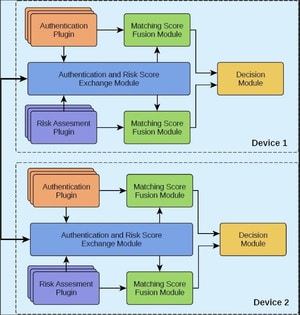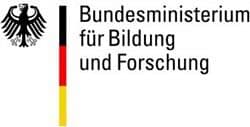AEGIS
- AEGIS
- 01.05.2015 - 30.06.2020
- Federal Ministry of Education and Research
- Research at universities of applied sciences: Young engineers + cooperative doctorates
- 422.000€
- Prof. Dr. Eckhard Koch
- Matthias Füller, Daniel Hintze, Sebastian Scholz
- Johannes Kepler University Linz, Claas Selbstfahrende Erntemaschinen GmbH, Wincor Nixdorf international GmbH, it's OWL Clustermanagement GmbH
Intelligent interaction of mobile systems
Project AEGIS: Structured analysis of safety challenges of intelligent mobile systems in dynamic groups and development of solutions
The spontaneous cooperation of intelligent mobile systems in dynamic groups is becoming increasingly important in a wide variety of areas. Examples range from the interaction of smartphones, smartwatches and other personal devices, the cooperation of agricultural machinery in a field and the transportation of goods using self-configuring supply chains, to the interaction of robots and drones. From an IT security perspective, the lack of centralized structures and trust relationships gives rise to various questions, many of which cannot yet be answered adequately. The task of AEGIS is to analyze the security challenges of dynamic groups in a structured manner and to develop solutions based on the latest scientific findings. The research project, which began in May 2015, is funded as part of the BMBF program “Research at Universities of Applied Sciences: Young Engineers + Cooperative Doctorates”. International research groups from the fields of mobility and security as well as partners from industry are working closely together here. As part of the project, Daniel Hintze is doing his doctorate as a research assistant at the FHDW at the Johannes Kepler University in Linz.

Innovative architecture for secure group communication
The aim of the AEGIS project is to develop a generic architecture for secure communication in dynamic groups of intelligent mobile systems. The evaluation of this architecture – both through the use of simulations and in practical, industrial application scenarios – is also planned. On the one hand, companies should be able to guarantee their customers end-to-end security in dynamic environments in a largely automated manner. On the other hand, the project concerns the civil and private security of citizens who use several end devices almost simultaneously and require a consistent, coordinated authentication infrastructure.
Dynamic approach offers greater flexibility and customizability
The initial focus was on designing and simulating the architecture model. Based on the results of the previous requirements analysis, a target concept and the software architecture of the system were developed. In this context, it became apparent that a dynamic, modular approach offers significantly greater flexibility and adaptability and therefore appears to be the most suitable for the various application scenarios across industries. The developed concept was implemented in the form of an initial prototype, which was used as the basis for an extensive simulation. The simulation confirmed that the developed concept can basically provide the required properties in terms of flexibility and functionality even under the difficult conditions of unreliable mobile communication.
As planned, work continued on the software implementation of the overall system. Essentially, the software elements of the defined architecture were implemented and checked in the form of unit and integration tests. To facilitate integration into industrial products, a software interface (API) was also developed for the system. The overall system bears the name “CORMORANT”.
The CORMORANT framework
CORMORANT is an extensible framework for “Continuous Risk-Aware Multi-Modal Cross-Device Authentication”. It consists of an application programming interface (API) for the development of authentication and risk plugins, an application for Android devices and a server backend for cross-device communication. All parts are published under an open source license. CORMORANT uses the Signal protocol (formerly Axolotl protocol) as a cryptographic communication protocol between devices in a group. The Signal protocol is a protocol for secure messaging. It is characterized by end-to-end encryption and is specially designed for mobile use. For example, it takes into account when messages can only be received at a later point in time. It is used in Facebook Messenger, WhatsApp, Signal and some other chat apps. By using the Signal protocol, the AEGIS project is relying on a cryptographic communication approach that has already been validated in science.
The intensive collaboration with the Johannes Kepler University Linz as an associated project partner and the Hagenberg University of Applied Sciences should be emphasized. The scientists at the Johannes Kepler University Linz contributed several new biometric authentication mechanisms for the CORMORANT system, for example the module for voice and gait recognition.
Supported by
